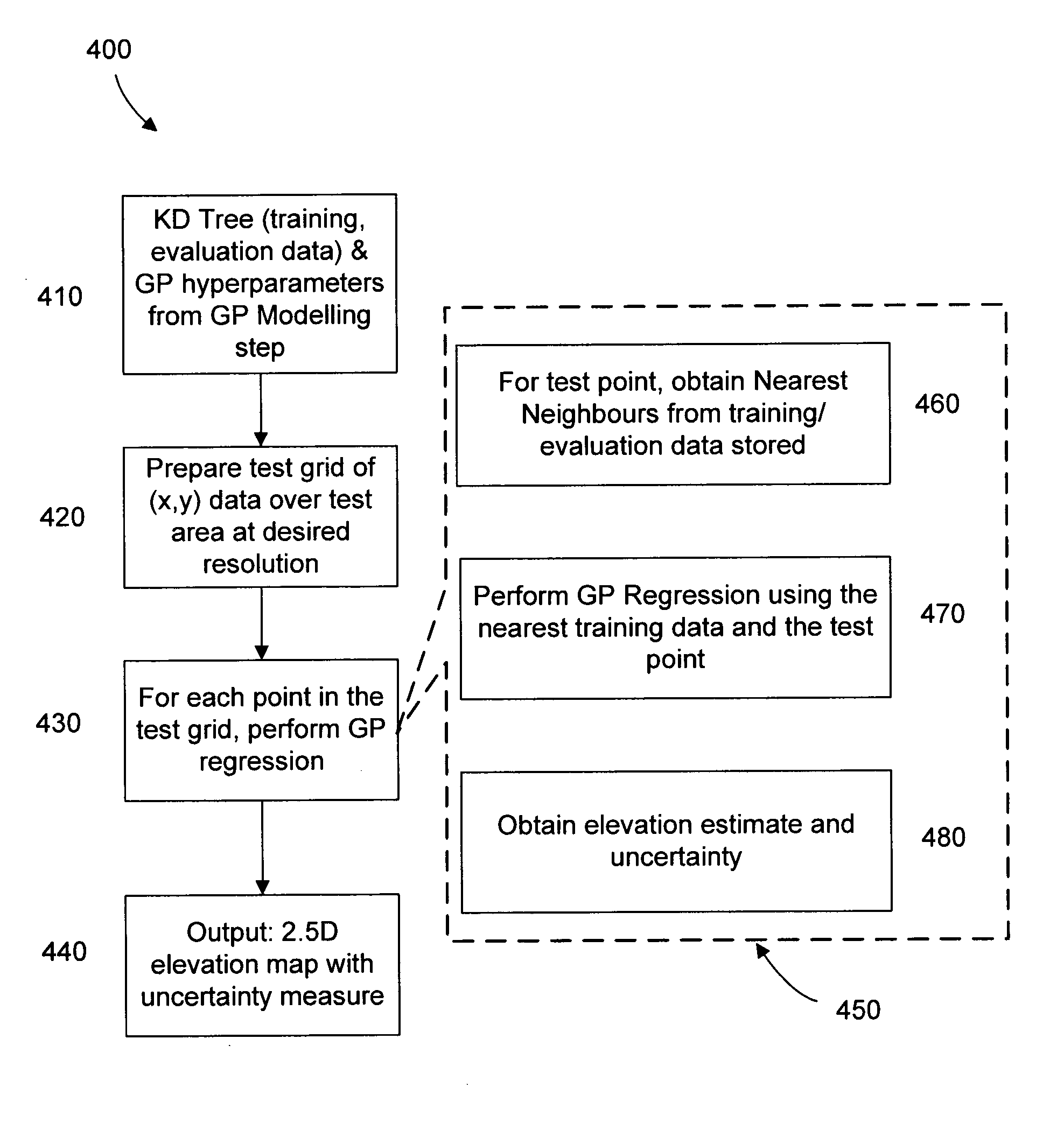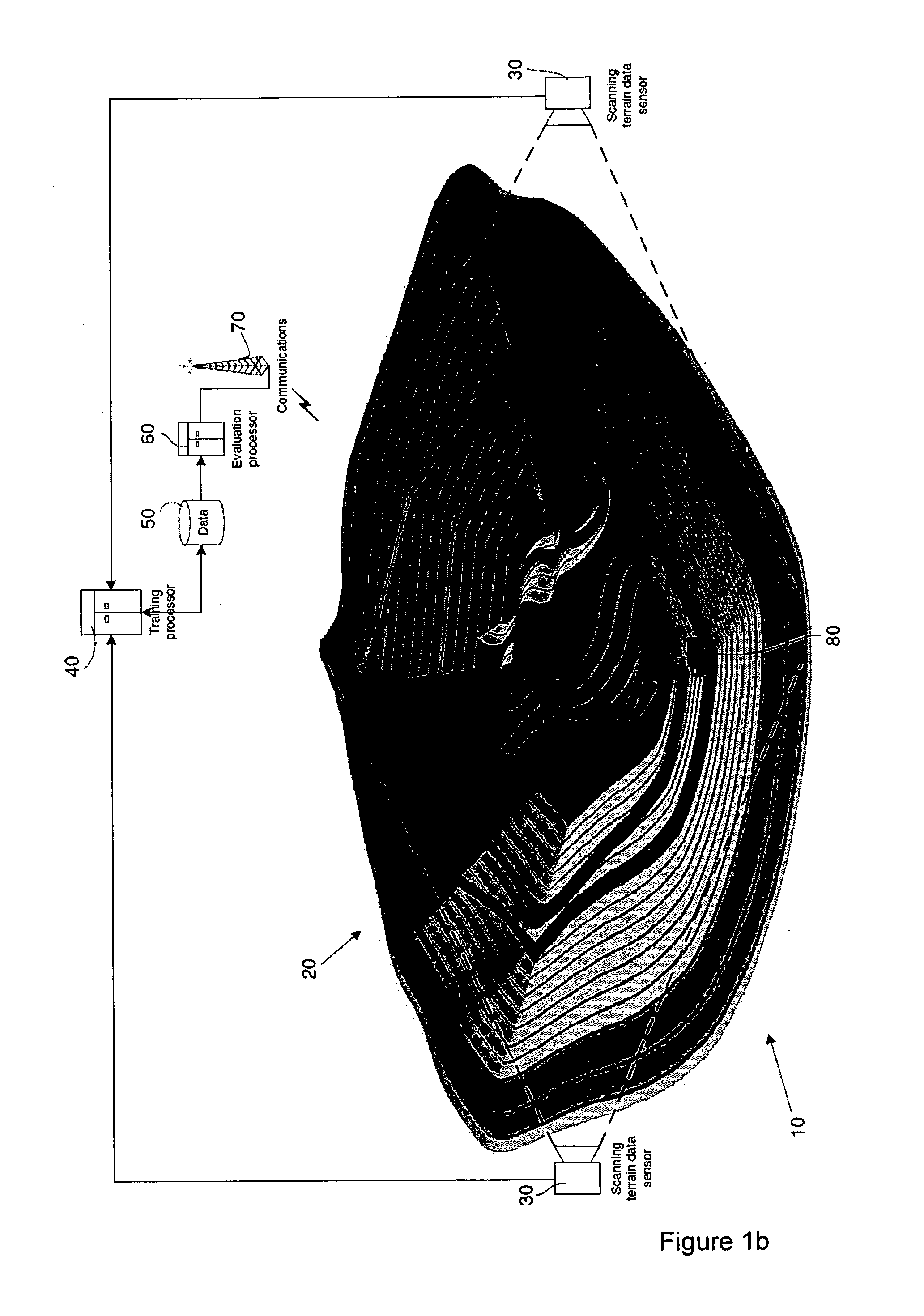Method and system of data modelling
a data modelling and data technology, applied in the field of data analysis and synthesis, can solve the problems of difficult large-scale terrain mapping, inability to take many samples, and inability to meet the needs of large-scale terrain mapping,
- Summary
- Abstract
- Description
- Claims
- Application Information
AI Technical Summary
Benefits of technology
Problems solved by technology
Method used
Image
Examples
application examples
4. APPLICATION EXAMPLES
[0107]Experiments were performed on three large scale data sets representative of different sensory modalities.
[0108]The first data set comprises of a scan from a RIEGL LMSZ420 laser scanner at the Mt. Tom Price mine in Western Australia. The data set consists of over 1.8 million points (in 3D) spread over an area of 135×72 sq m, with a maximum elevation difference of about 13.8 m. The scan has both numerous voids of varying sizes as well as noisy data, particularly around the origin of the scan. The data set used is referred to as the “Tom Price” data set.
[0109]The second data set comprises a mine planning dataset, that is representative of a GPS based survey, from a large Kimberlite (diamond) mine: This data set is a very hard one in that it contains very sparse information (4612 point in total; the average spread of the data is about 33 m in x and y directions) spread over a very large geographical area (≈2.2×2.3 sq km), with a significant elevation of abou...
PUM
 Login to View More
Login to View More Abstract
Description
Claims
Application Information
 Login to View More
Login to View More - R&D
- Intellectual Property
- Life Sciences
- Materials
- Tech Scout
- Unparalleled Data Quality
- Higher Quality Content
- 60% Fewer Hallucinations
Browse by: Latest US Patents, China's latest patents, Technical Efficacy Thesaurus, Application Domain, Technology Topic, Popular Technical Reports.
© 2025 PatSnap. All rights reserved.Legal|Privacy policy|Modern Slavery Act Transparency Statement|Sitemap|About US| Contact US: help@patsnap.com



